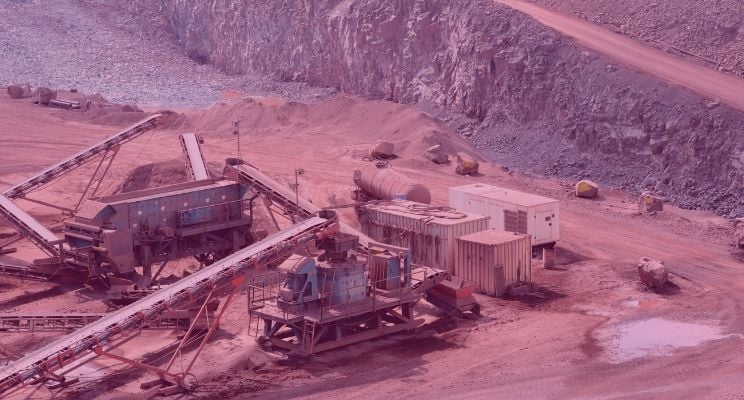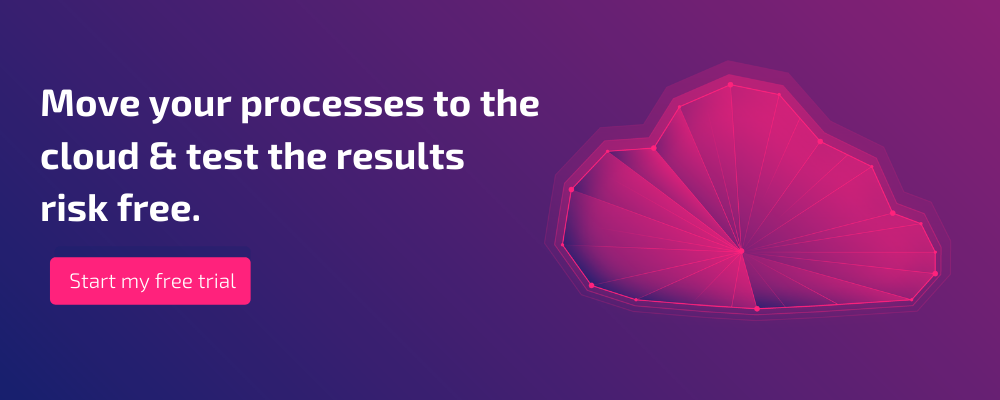5 ways the mining sector can increase laser scanning adoption

Mining in the 21st century relies on safety, efficiency and accuracy. The aim is always to cut costs and improve safety by automating and optimising critical workflows. Cloud-based 3D laser scanning, drone surveys and underground scanning are leading the charge to support this aim, enabling access to a real-time view of progress and the terrain.
Point clouds generated from scans are helping maintain and monitor sites. For example, they are already being used to help detect underground tunnel movement and assure the stability of pit walls. But this is only the beginning of the uses of laser scanning.
In order to effectively adopt new technology, it’s important to both understand developments and look at real-world applications. Here are some of the factors accelerating laser scanner adoption, and strategies to help you improve your application of the technology. Let’s get started.
1. Exploit point cloud performance gains
3D lidar scanners have dropped significantly in price in recent years, becoming smaller, lighter and more comfortable to operate. They can now also be airborne, terrestrial, unmanned or mobile. All of these scans need to be processed, registered and aligned to create meaningful data to be analysed and shared.
Accelerate processing times
Processing and applying this data has also become faster and easier. Until recently, assembling LiDAR-produced point clouds was a daunting prospect. The accuracy provided by the data resulted in large file sizes, all of which required processing and aligning.
Machine learning and AI techniques have taken the registration process to a new level. The use of technologies, such as multi-stage, vector-processing has also made it much easier to take full advantage of the cloud in processing. Parallelisation of tasks can be scaled almost infinitely in the cloud, and where manual inputs can be front-loaded, this delivers significant time saving and automation.
We have reached a significant point in this merging of data science and scanning technology. It’s delivering massive efficiencies and cost savings, opening up new ways of working previously thought impossible.
Suggested reading: If you are interested in learning more about the technical elements of vector-based and cloud-based processing, check out both of our free eBooks:
2. Embrace the cloud
The cloud delivers three major benefits to laser scanning workflows:
- Processing acceleration
- Infrastructure simplification
- Better collaboration
As we have discussed, when paired with the right processing algorithms, the cloud can dramatically improve processing time by providing access to scalable computing power.
The cloud also delivers more flexible and easier to manage infrastructure. It’s simpler to scale, host and access. Paired with 5G, you get remote access to sophisticated computing technologies — making in-field processing and collaboration a real possibility
Fundamentally, although point clouds have the reputation of being large, slow, and difficult to process, the combination of new laser scanning software and cloud-scaling has accelerated data processing through real-time parallel computation, with access to potentially unbounded memory and CPU power. This enables systems to scale and create scans of large and increasingly complex environments such as mines.
Collaboration
While cloud processing power and flexibility are impressive, what shouldn't be underestimated are the collaborative possibilities in the cloud. There are many stakeholders in mining, and all need to be kept up to date. The cloud delivers centralised access to a single-source-of-truth. It’s easier to share files, update plans, engage specialists on-demand, and keep everyone on the same page.
There is growing evidence of considerable savings in time and increased quality delivered by cloud services if applied to the complete cycle of exploration, mine-site design and planning, construction and production through to closure and reclamation.
3. Deploying drones
Obtaining mine data is challenging, time-consuming and potentially dangerous. In many cases, using existing survey techniques, it isn't even possible to collect the required data because the areas are inaccessible.
Drones eliminate the hazards of walking through dangerous zones, navigating active sites, or climbing onto stockpiles. All this can be achieved without disrupting operations or the movement of machinery.
Capturing data with a drone can be up to 30 times faster than with traditional land-based methods. And although you will still need qualified professionals on hand with the necessary CAA qualifications, you don’t necessarily need a surveyor on site. Data can be collected at a frequency best suited to you with more frequent and accurate analysis.
Aerial surveying and mapping
Surveying and mapping of landscapes is a time-consuming process.
By using drones, instead of a piloted plane, could save around 90% of cost. A drone can also collect as much aerial data as needed. This can also include highly-detailed measurements captured with high-end “orthoimages”.
Stockpile management
Any mining company faces challenges while managing stockpiles — from the sheer scale of the area covered, to the height, which tends to change frequently.
Drones enable mining companies to generate 3D models of their terrain and inventory. They can ensure companies keep track effectively of stockpile movement.
Access optimisation
The site road network has a significant impact on the efficiency of mining. Road conditions must be monitored to ensure safe and consistent transit.
Drones can be deployed to collect aerial data which can then be used for planning, designing, construction and maintenance of access.
4. Watch out for SLAM and robotics
Autonomous mining is the holy grail for mine safety and efficiency. The key is accurate localisation and mapping for the underground mining environment.
Simultaneous localisation and mapping (SLAM) is the current solution to the problem of constructing a map when you are in an unknown environment, while keeping track of your location within it (at the same time).
SLAM isn't just mapping without GPS (although some SLAM uses GPS). It will enable the transition from Automated Guided Vehicles (AGVs) to Autonomous Mobile Robots (AMRs). With this move, robotics will have a significant part to play in the mining industry in the future. Examples include:
- Entering a collapsed mine after an explosion: Robots could work out if it’s structurally sound and safe for people, and develop accurate maps of the structure to enable mining to continue.
- Mine reclamation: Robots could discover how much fill is required — saving time, money and keeping people safe.
5. Stay focused on outcomes
Laser scanning in mining has some significant use cases and exciting areas to pursue. However, it is always worth a word of caution. Developments such as robotics, SLAM and drones are progressing at uneven paces. It’s vital that you have your own technology roadmap, a solid plan and only invest for a reason.
Keeping focused on what outcomes you want to achieve will help decide where your best area of investment will be. These are some of the areas you could focus on:
Increasing access safely
Despite the most thorough safety checks, mining sites are hazardous. The mapping process itself can be a high risk. Underground mapping is one of the most challenging and demanding forms of surveying, with mining professionals needing to work in tight, enclosed spaces.
Robotics and underground drones could enable point clouds to be created, uploaded to the cloud and processed without anyone being near the site,
Working smarter
Mining projects are time-consuming and complicated. Companies can look at combining mobile scanning and drone operations to enable them to plan efficient site operations to optimise their production cycles.
Working faster
The pressure is always on mining professionals to quickly and precisely map sites. You can look to improve the end-to-end process from scan capture, registration and analysis — replacing slow and inefficient traditional survey techniques.
Towards the future
Point cloud processing is now an essential tool for data collection and analysis. Open-pit and underground mines of all sizes are collecting point cloud data.
LiDAR and photogrammetry surveying devices are now seen as affordable. Technology advancements in cloud processing and vector-based registration have already addressed the challenges of vast amounts of data and long processing times.
The future for laser scanning and point clouds in mining lies in automation and data connectivity. With its ability to safely, quickly and accurately extract large quantities of 3D data, point cloud technology is providing the basis for new and exciting applications which will transform the mining industry. It’s up to you to put those transformations to the test.
Tags: laser scanner


